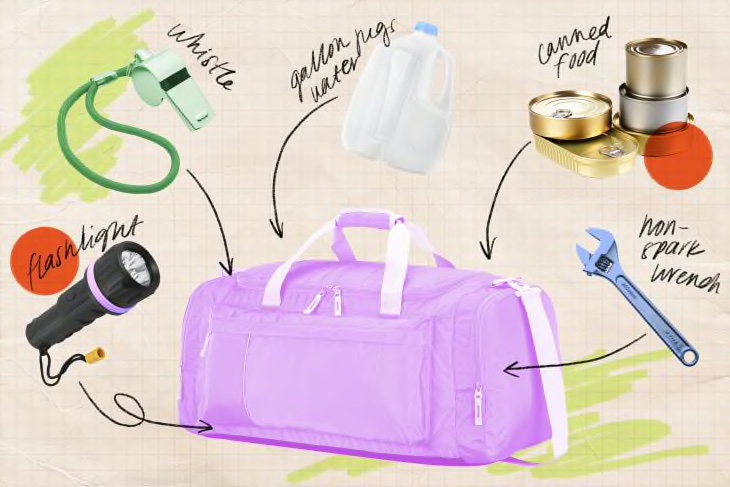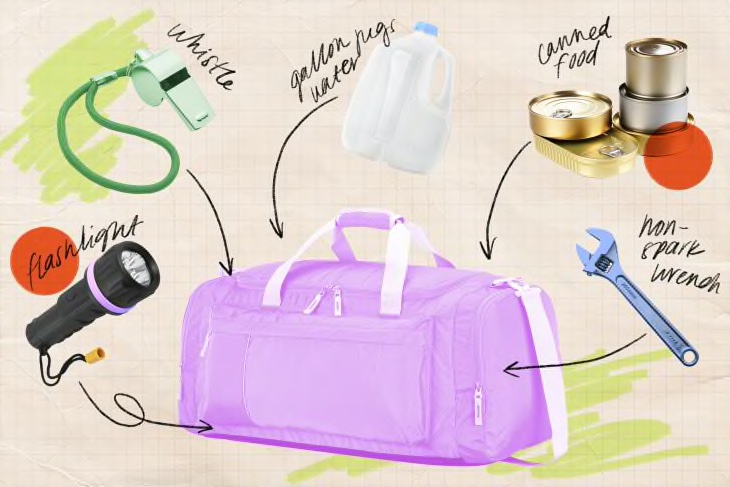When I was a kid, my favorite movie was The Wizard of Oz: a dreamy prairie girl is cyclone-swept to a fantastical realm where she encounters friends and foes on her journey back home. But having newly relocated to a tornado-prone region, the concept of a twister scooping me up and hurtling me anywhere hits a little too close to home.
On March 31, a strong tornado hit Arkansas. I was about to head out the door to pick up a 10K race packet from the running store when my phone blared with a tornado warning alert: “Tornado spotted in this area. This is a life-threatening emergency. Take shelter now …”
Weeks back, during a particularly bad thunderstorm, I had to Google the difference between a tornado watch and a warning, which had me questioning my overall preparedness for any emergency. This time, I knew what to do and rode out the worst of the storm in my hallway with my emergency kit nearby. Needless to say, the race was canceled; the running shop had been destroyed.
April officially kicks off tornado season, and although I felt mostly prepared, not everyone has a plan. “Less than two-thirds said they feel prepared to face a disaster,” shares Jonathan Sury, senior staff associate at the National Center for Disaster Preparedness at Columbia University. He’s part of a team that has studied emergency preparedness, community needs, and responses, for over a decade. “In general, we’re not prepared enough.”
It’s best to start by knowing the risks where you are. While tornadoes might not occur in your region, hurricanes, floods, earthquakes, and even extreme heat all demand a plan. Columbia University’s National Hazards Index is a good place to start. “It tells you, at the county level, which hazards are in your area,” Sury says.
Then, you should organize an emergency kit. According to Ready.gov, kits should fit in one or two easy-to-carry containers, like a plastic bin or a duffel bag. While I did have a flashlight, battery-operated radio, batteries, N-95 masks, candles, and a lighter in a plastic bin in my laundry room, after researching, I learned that an ideal kit requires a lot more.
An emergency kit should include the following:
- Water (aim for a gallon per person, per day, for drinking and sanitation)
- Non-perishable food for several days (for small spaces, Sury recommends economical energy bars, dehydrated foods, or meals ready to eat, aka MREs)
- Can opener (or be sure you have pop-top cans)
- Extra cell phone battery or charger
- Radio: battery-powered or hand-crank, that can receive NOAA Weather Radio tone alerts. “Cell towers in big events have about 72 hours of generation, after that they don’t work well,” says Sury.
- Flashlight and extra batteries
- First-aid kit
- Whistle (to signal for help)
- Masks to help filter contaminated air
- Plastic sheeting and duct tape to shelter-in-place
- Moist towelettes, garbage bags, and plastic ties for personal sanitation
- Non-sparking wrench or pliers to turn off utilities
- Necessary family and pet medications
Sury also recommends having paper backups of important phone numbers and regional paper maps if GPS is down and you need to evacuate. Digital backups of important documents and family memorabilia are important, too. “Many victims of flooding and fire will lose Social Security cards, deeds to homes, and all of the important documents that are vital when you’re trying to recover or apply for aid,” says Sury.
When organizing my bin, I like to keep my important documents in a water-resistant and fireproof bag as well as have extra batteries in zip-top bags for added protection. My flashlight and radio are located at the top for easy access, too. Bins should be kept in a cool, dry place that you can easily get to during an emergency (like in the case of a tornado, a windowless interior closet).
And because emergencies can be scary and upsetting, consider bringing a comfort item for your kids or pets, says Sury.
If you haven’t considered a kit or a plan, Sury suggests simply starting somewhere. Collect or purchase items as you can, and have a conversation with friends and relatives about what you’d do and where you’d go in the event of an emergency.
“If you are prepared, you will not panic,” says Sury. “You may be concerned, but you won’t panic, with education and knowledge.”
The full and original version of this story appeared in Apartment Therapy in April 2023.




